All products featured are independently chosen by us. However, SoundGuys may receive a commission on orders placed through its retail links. See our ethics statement.
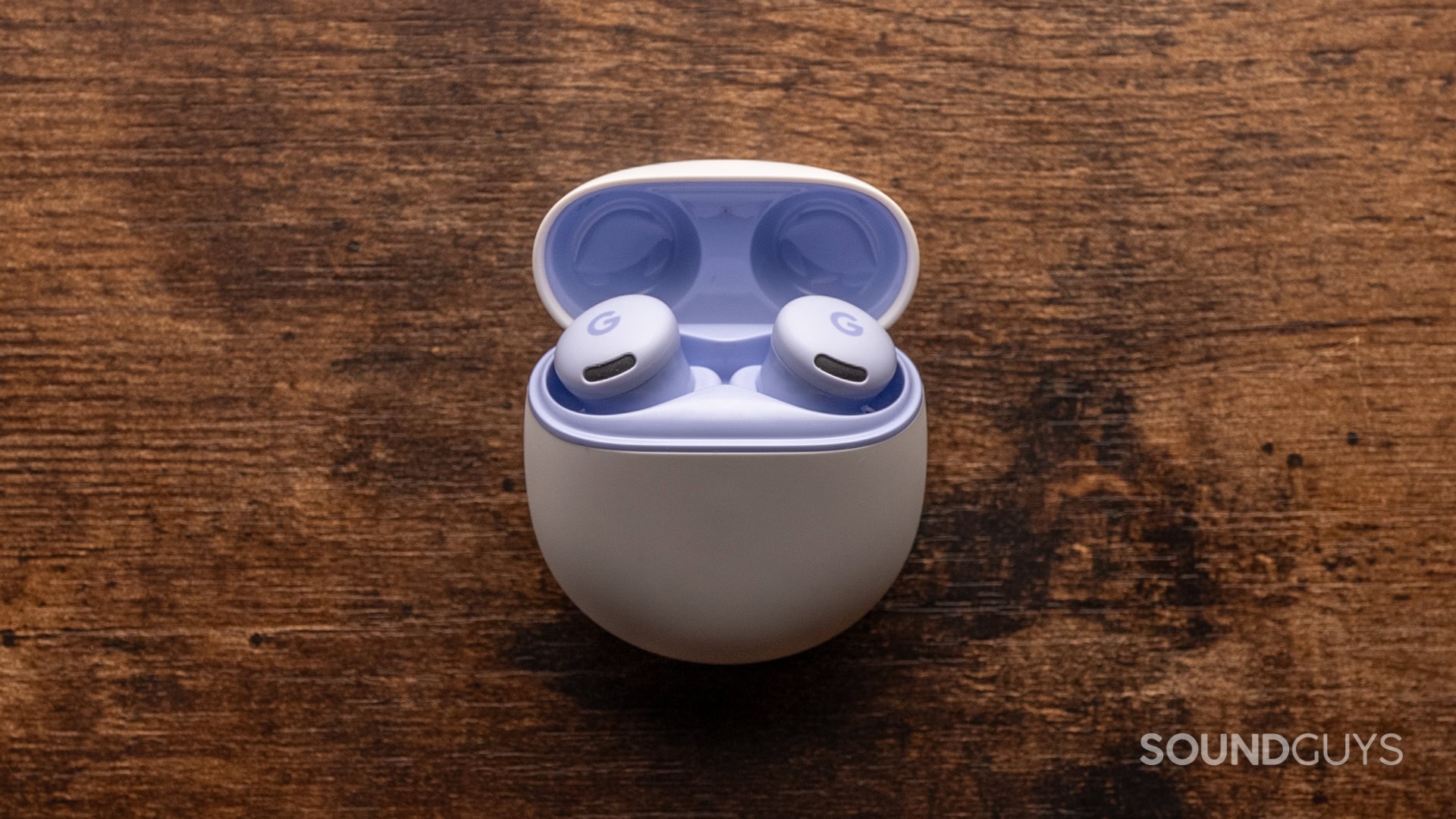
Google Pixel Buds 2a review: Diet Pixel Buds at a palatable price
October 10, 2025
Google Pixel Buds 2a
Case: 50 x 58 x 25mm
Ear-tip sizes: XS, S, M, L
Case: 47.6g
As personal audio has been partially subsumed by big tech, it’s no surprise that Google has had its tentacles in earbuds for quite a while. Despite not owning a previously-established audio brand, the conglomerate’s offerings have been pretty decent — even going so far as to run their own listener preference studies behind closed doors. But are the latest earbuds they’ve brought to market any good? I spent a few days with them to find out.
The Google Pixel Buds 2a is for Android phone owners who want the latest features of the Pixel Buds Pro 2, but aren’t willing to pay for the higher-end model.
This article was published on October 10, 2025, and this is the first version of the article. Updates will follow as the market changes.
What’s it like to use the Google Pixel Buds 2a?
Straight out of the box, the Google Pixel Buds 2a seems to embody Google’s design ethos, just in physical form. Muted, inoffensive color schemes and very smooth surfaces without any hard protrusions have become synonymous with big tech’s oevre, and the Google Pixel Buds 2a is no different. The buds have a circular touch plate on the back of each housing, with extremely rounded edges and a soft finish. Each bud has a semicircular fin that pushes against your outer ear to hold the buds more firmly in your ear canals, which does its job admirably — even though it often feels like the earbuds are ready to go flying out at any moment.
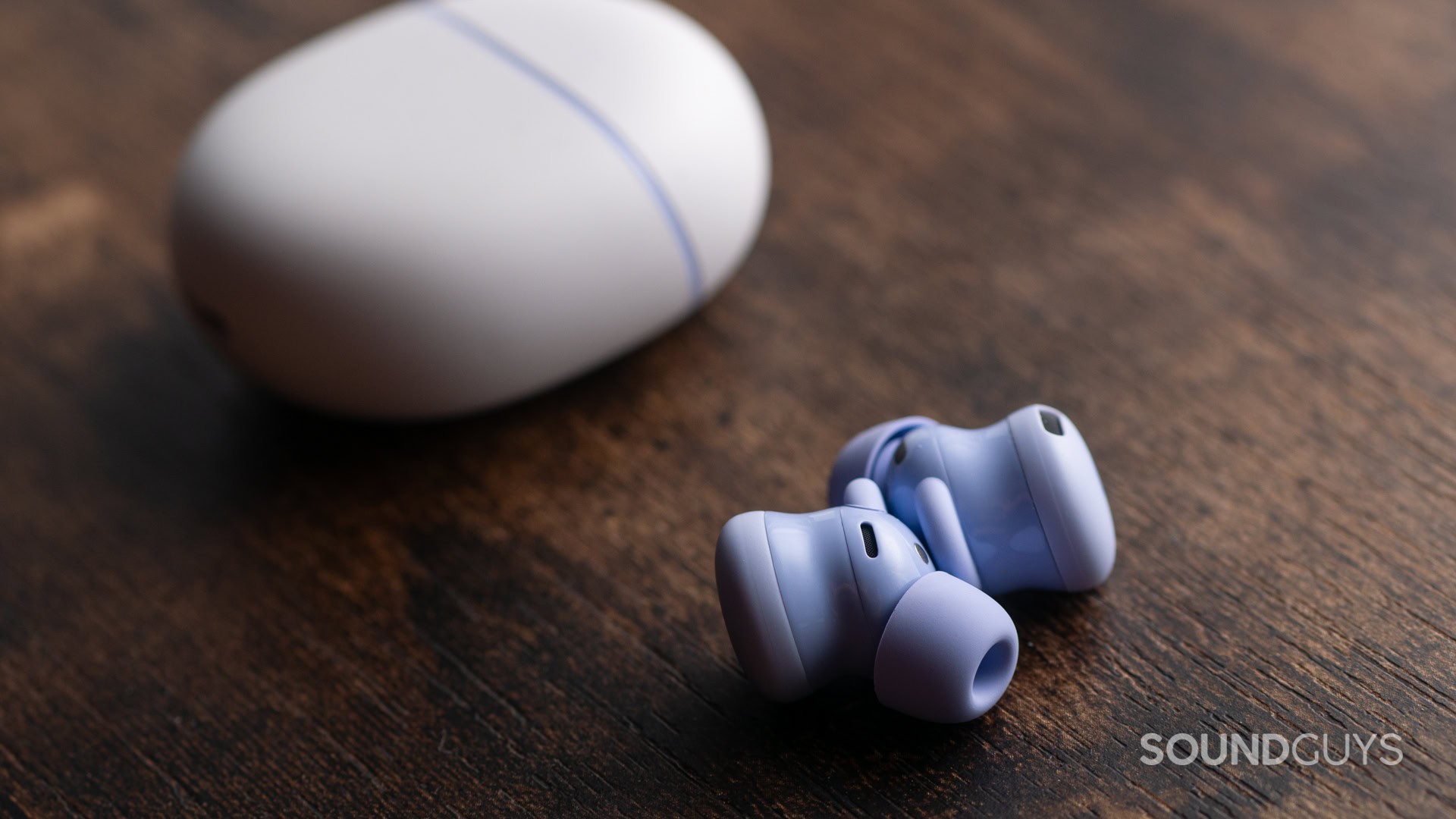
Those with shorter ear canals or smaller ears will absolutely prefer these to AirPods Pro models in terms of comfort. However I will note that sometimes — and I mean very infrequently — high-pitched whining was audible with a bad fit. Twisting the earbuds a little further into place fixed this, but if you aren’t wearing tips that are big enough, you might have trouble getting the Google Pixel Buds 2a to stay where you want them. In that case, try sizing up with the included sleeves, and you should be golden.
The Google Pixel Buds 2a was built to survive the outside world, with an ingress protection rating of IP54. Consequently, rain, sweat, or sand shouldn’t pose a problem for these. If you’re someone who needs constant music throughout the day, it’s nice to know that these earbuds can handle a freak downpour or impromptu sprint.
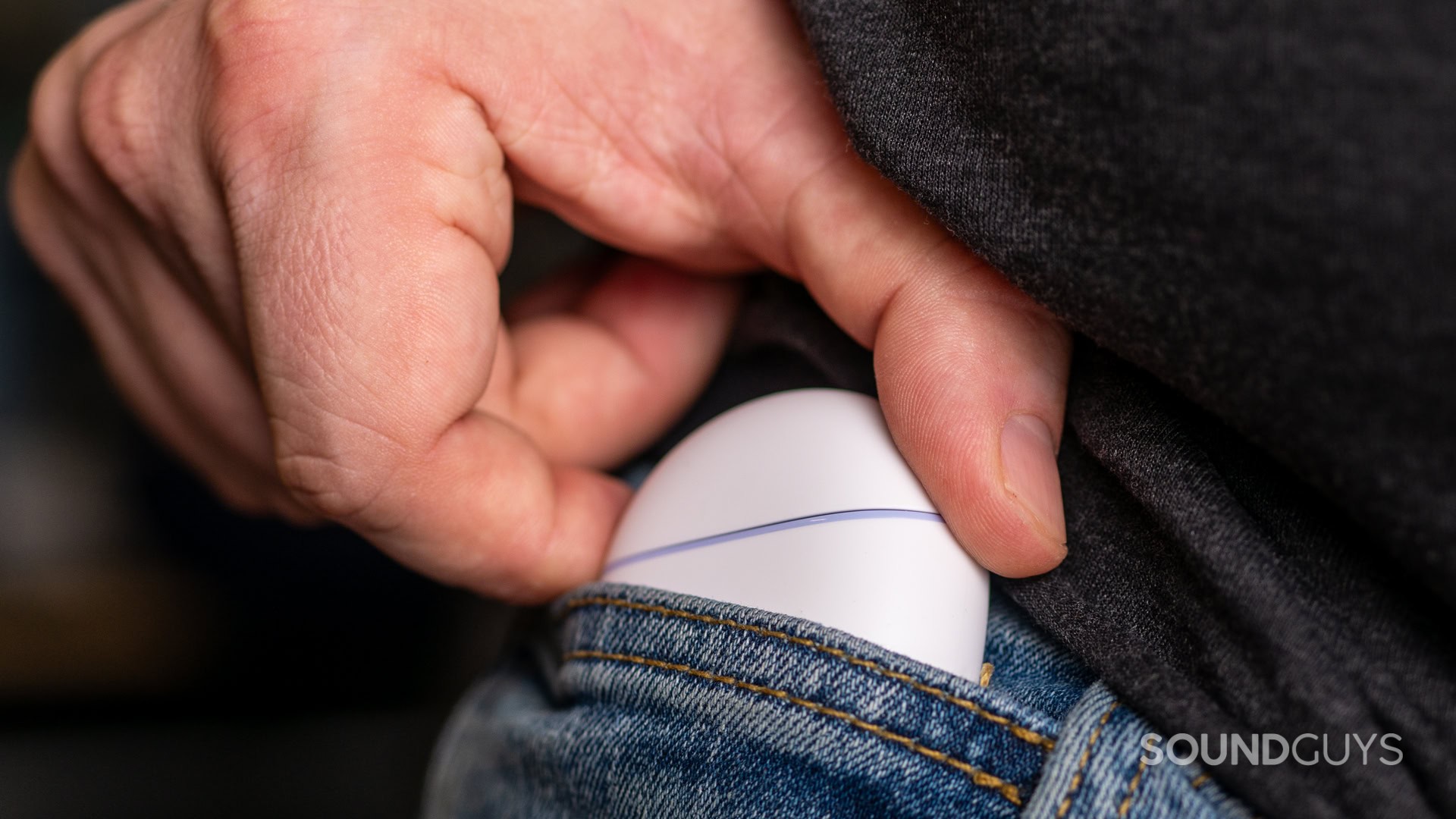
As these earbuds are meant to be an extension of your Pixel phone (or really, any Android phone), there’s a bunch of goodies baked in for those in the Google ecosystem. For example, using a supported Android phone will allow you to make use of the super wideband feature for improved call quality, or the hands-free Gemini integration that allows you to replace your voice assistant with… another voice assistant but different.
You can control the earbuds by using either touchplate, with taps or long presses. As there are no buttons on the earbuds, you don’t need to apply any force to the earbuds — which is a relief. You can customize the long press function for each earbud using the Pixel Buds app, setting it to alter the noise control mode (ANC on, ANC off, transparency), or to activate Gemini.
Basic controls:
| Input | Left Earbud | Right Earbud |
|---|---|---|
| Input Single tap | Left Earbud Play / Pause | Right Earbud Play / Pause |
| Input Double tap | Left Earbud Track Forward | Right Earbud Track Forward |
| Input Triple tap | Left Earbud Track Backward | Right Earbud Track Backward |
| Input Long press | Left Earbud User defined | Right Earbud User defined |
What are the best features of the Google Pixel Buds 2a?
Though the Google Pixel Buds 2a is meant to be a sort of “step down” from the Google Pixel Buds Pro 2 for those who want something a little more affordable, the earbuds have a decent set of features for those who want them. For example, the call quality upgrades and the live Gemini features are solid inclusions for earbuds meant to augment your smartphone. Other features, like Find Hub, allow you to locate your earbuds on a map, and are solid additions.
However, there’s some Pixel ecosystem lock-in, and that’s quite annoying. Spatial audio, for example, is only available on non-A-series Pixel phones and the Pixel Tablet. That’s a load of hot garbage, but it’s the tradeoff for getting a product that’s meant to work within a narrower ecosystem than just “Android.” While I don’t personally much care for this particular feature, it still sucks to have to go without if you have the wrong phone. But it just seems to be the world we live in now.
How does the Google Pixel Buds 2a connect?
The Google Pixel Buds 2a connects to all of its source devices via Bluetooth 5.4, with the ability to connect using SBC, and AAC. Though this should mean that LC3 is also available, I was not able to find a primary source to confirm this in Google’s product documentation.
As these are a set of pretty basic earbuds, it shouldn’t surprise anyone that Google opted to eschew higher-bitrate codecs in favor of a decent AAC implementation. This is good because not only is the compression very good for wireless, but the codec offers very low latency that Android has historically struggled with. Though there’s no way to link your device using a wired connection using only the hardware in the package, wireless dongles are cheap enough nowadays that you could pick one up for an airplane trip or older computer if you really need it. The Multipoint support will mean that you can swap between multiple devices fairly painlessly, though you’ll need to individually pair each device the first time.
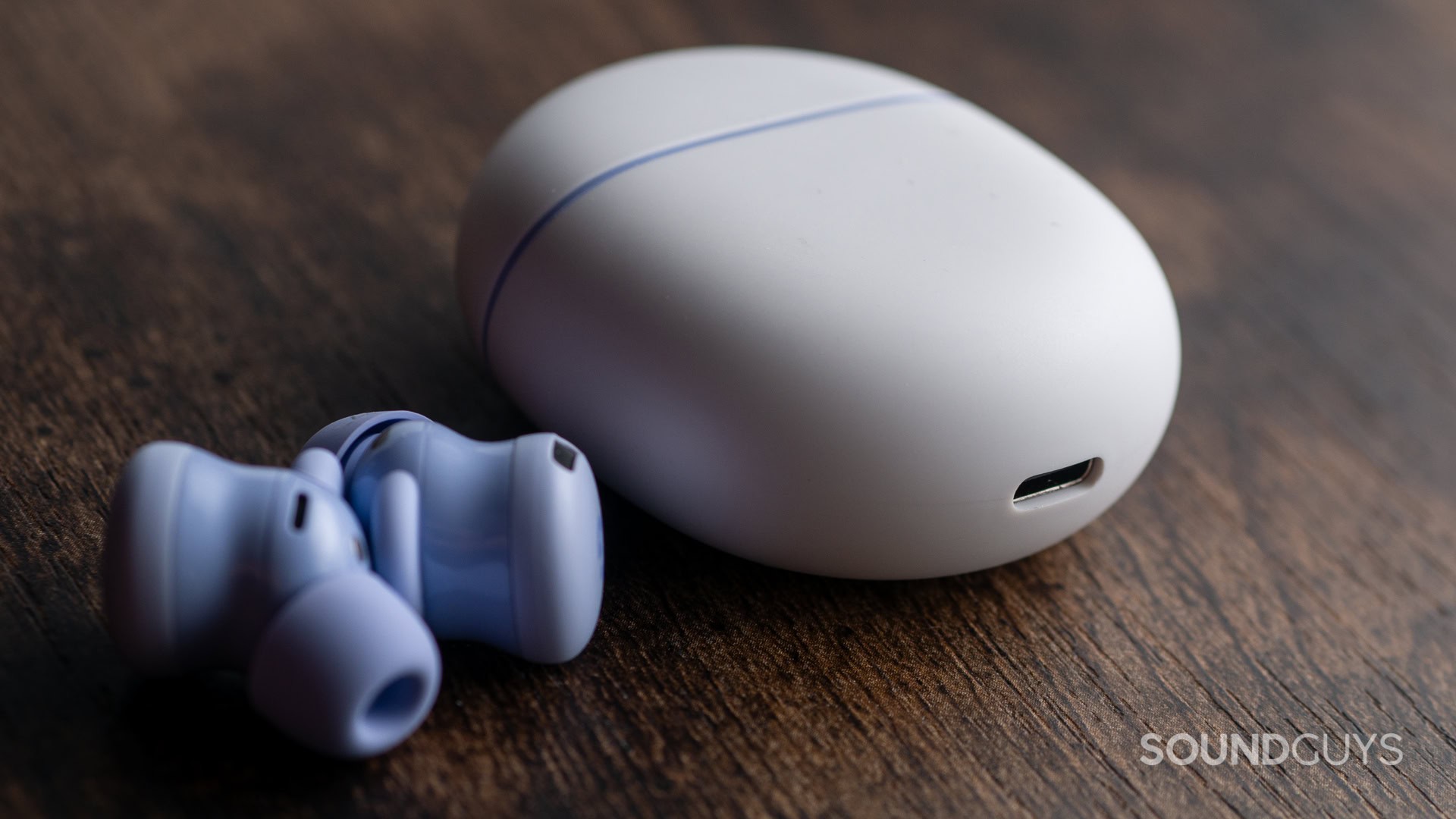
Because the Google Pixel Buds 2a supports Fast Pair, you should only need to open the case to pair with your phone. However, if you’re using a computer (or need to pair the old fasioned way), you can perform the following steps to do things manually.
- On your source device (phone, computer, etc.) turn on the Bluetooth and open the menu.
- With the earbuds in the case, open the lid and hold down the pairing button on the back of the case.
- Wait for the light to breathe in and out (pairing mode), and hit “scan” in the Bluetooth menu of your source device.
- When you see the Google Pixel Buds 2a in the list of available devices, tap it to connect.
- (Optional) Install the Pixel Buds app from the Play Store, and connect your buds to it.
How long do the Google Pixel Buds 2a’s battery last?
Hold up! Something’s missing
We’re still running the battery test for the Google Pixel Buds 2a, so there’s nothing here just yet. Google claims that you can squeeze 7 hours of listening on a single charge, but we’ll report back with our own findings. In general, figures for true wireless earphones can vary a bit due to smaller batteries showing a much more pronounced effect when different features are active.
How well do the Google Pixel Buds 2a cancel noise?
Loading chart ...
With a good seal and noise cancelation (ANC) enabled, you can expect roughly 76% of outside noise to be attenuated before it reaches your ear. Isolation is a little bit of a sore spot with these earbuds, as the nozzle doesn’t go very deep into your ear canal. While this is excellent for comfort, it does mean that sometimes small breaks in a seal or imperfect isolation is possible in normal use. Even in ideal conditions like our lab, this design can sometimes fall a little flat when we run our ANC tests — which is what we saw.
The Google Pixel Buds 2a are generally effective noise cancelers, but there’s something odd going on in the high end. Despite the temptation to write this off as a fit issue with the test head, I experienced this in my own listening. I’m pretty confident that this is a real phenomenon, whether it was intentional or not.
With that big ol’ dip in isolation between 4 and 9kHz, I found that sounds like tearing paper, keys jingling, and other high-pitched environmental sounds can cut right through your music. Despite the fact that this sounds annoying, I didn’t mind it so much. Sometimes when I’m reviewing ANC headphones, I’ll drop something and not know — and that’s definitely not a problem I had with the Google Pixel Buds 2a. Still, don’t expect these to top anyone’s list for best ANC earbuds or anything. They’re good, but this odd gap isn’t ideal, even if it isn’t really something to get upset about.
How do the Google Pixel Buds 2a sound?
The Google Pixel Buds 2a sounds decent, though it’s not going to earn much in the way of accolades. Most people should be perfectly happy with the sound of the Google Pixel Buds 2a, but this is definitely not aimed at audiophiles.
Reviewer’s notes
Editor’s note: this review uses a hover-enabled glossary to describe sound quality based on a consensus vocabulary. You can read about it here.
Objective Measurements
Loading chart ...
The response of the Google Pixel Buds 2a is pretty consumer-friendly, but it definitely is on the weird side. There’s a bit of an issue where the range between 1 and 5kHz is a bit underemphasized, while there’s notable spikes in emphasis at 7 and 10.3kHz. This should come across as a bit odd in your music, as some sounds like cymbals and guitars will sound a bit less clear than they should, and a bit like early MP3-era compression with certain loud songs. It’s definitely something you get used to, but I wish there were more ways to deal with this than a 5-band equalizer slider array.
Bass and low mids are slightly overemphasized, making the underemphasis in the previously-discussed range much more noticeable. Though the Google Pixel Buds 2a does a good job of not going crazy here, it’s one of those times where even bassheads might struggle to figure out how to tweak their tunes.
Overall, this isn’t a horrible response, but I’m still curious to see why these earbuds are tuned the way they are. There will be those who really like this, but there will also be those who really hate it. Like a lot of earbuds!
Balanced EQ Preset
Loading chart ...
This preset touches down the bass and a bit of the highs to bring the response a bit “flatter,” though it still has the odd presentation in the highs.
Clarity EQ Preset
Loading chart ...
This response flattens out the bass shelf while bumping up the spike above 10kHz. Presumably, this is to boost the illusion of “detail” by highlighting little sounds that often get drowned out in an otherwise more-standard tuning.
Heavy Bass EQ Preset
Loading chart ...
This preset drops highs by about 1-2dB, while boosting the bass shelf by about 4dB over the default response. This definitely offers users exactly what’s on the label.
Light Bass EQ Preset
Loading chart ...
Like other presets, this one flattens out the bass shelf, but it also increases highs by about 1dB to make the earbuds sound fairly bright.
Vocal Boost EQ Preset
Loading chart ...
For podcast and other vocal content, this preset dampens bass considerably, while also cutting highs by about 1-3dB so that other sounds don’t dominate your experience while trying to focus on voices. It would be much easier if the underemphasis between 1 and 4kHz was addressed, but that wasn’t in the cards, apparently.
Loading chart ...
Oddly enough, turning the ANC off does, in fact, change the response. From 400Hz and under, the emphasis is more in line with what we generally like to see. However, there’s even more emphasis between 5 and 8kHz that some might find objectionable.
Multi-Dimensional Audio Quality Scores (MDAQS)
The chart below shows how the Multi-Dimensional Audio Quality Score (MDAQS) algorithm from HEAD acoustics assesses the sound of the Google Pixel Buds 2a. The sound quality is rated on a scale from 1.0 (very bad) to 5.0 (very good).
Hold up! Something’s missing
We’re currently upgrading a few things in the lab, and we’re holding off posting MDAQS results for now. But we have tested the Google Pixel Buds 2a — we’re just compiling a little more information before we publish the results to ensure the quality of data meets our editorial standards.
- Timbre (MOS-T) represents how faithfully the headphones reproduce the frequency spectrum and temporal resolution (timing information).
- Distortion (MOS-D) represents non-linearities and added noise: higher scores mean cleaner reproduction.
- Immersiveness (MOS-I) represents perceived source width and positioning: how well virtual sound sources are defined in three-dimensional space.
Can you use the Google Pixel Buds 2a for phone calls?
As true wireless earbuds have evolved alongide headphones to be an appendage of smartphones, it’s no surprise that you can use the Google Pixel Buds 2a for your calls and video conferences. Below are samples of the product’s mic recorded in our labs, in both ideal conditions and not-so-ideal conditions. Just remember that your network, client, and computer all may give you differing results from ours, as you can’t always control the processing or noise reduction each might apply to your audio.
Google Pixel Buds 2a microphone demo (Ideal conditions):
How does the microphone sound to you?
Google Pixel Buds 2a microphone demo (Office conditions):
Google Pixel Buds 2a microphone demo (Street conditions):
Google Pixel Buds 2a microphone demo (Windy conditions):
Google Pixel Buds 2a microphone demo (Reverberant space):
It seems as though the windscreen over the microphone holes does okay here, but some incidental noise gets through. Still, that’s not too bad, given these are fairly inexpensive earbuds.
Should you buy the Google Pixel Buds 2a?
At $129, there are far worse earbuds out there, and there aren’t many that offer AI integration like the Google Pixel Buds 2a either. For the tech-obsessed or even someone who wants to lean into newer features of earbuds, the Google Pixel Buds 2a is a solid bet. It ticks all the boxes that most midrange earbuds do, and doesn’t come with any horrible tradeoffs. However, audiophiles are probably going to pan these earbuds because of their sound.
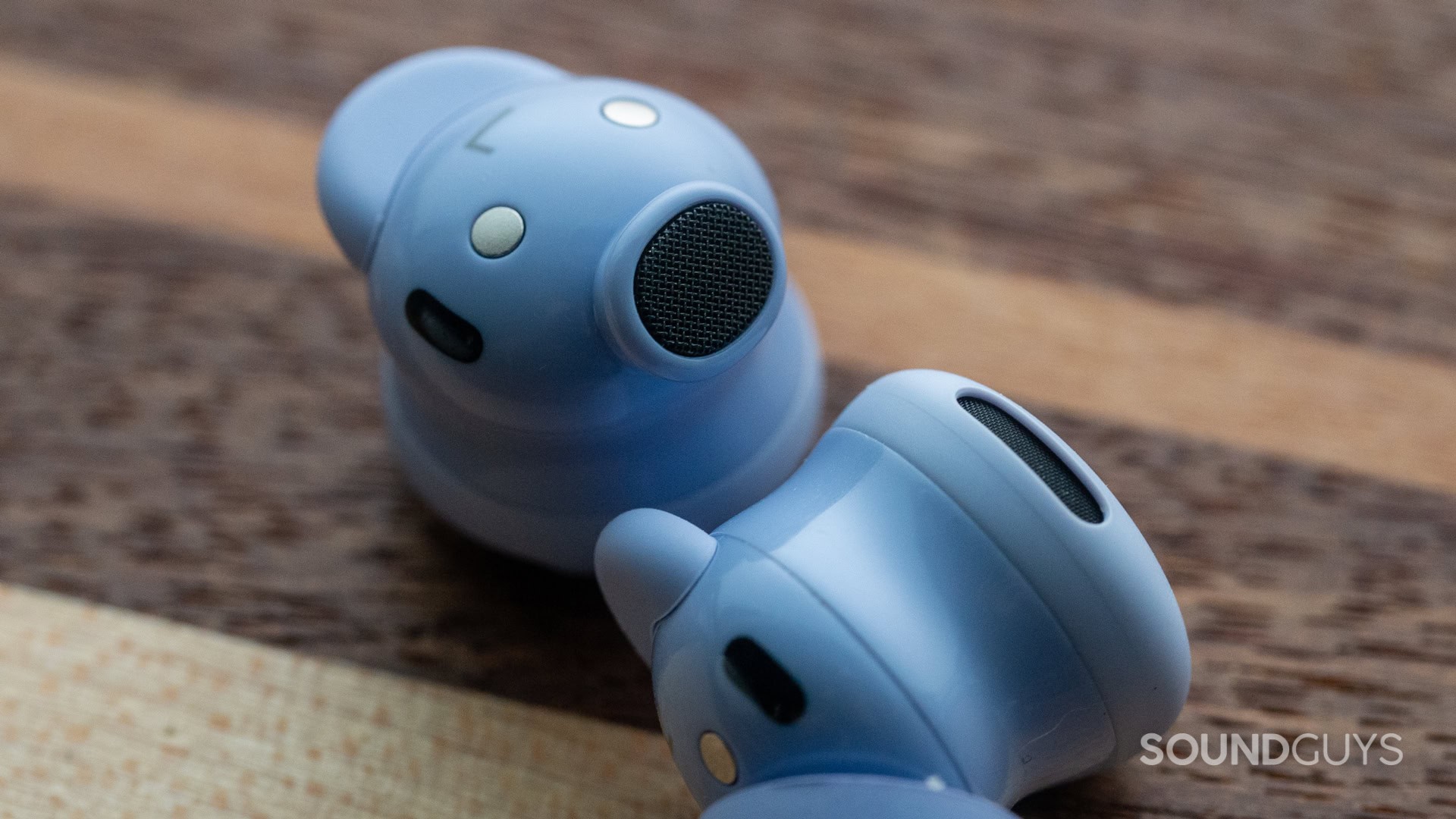
If you find that you have trouble with most true wireless earbuds, I think that you should probably give either the Google Pixel Buds Pro 2 or the Google Pixel Buds 2a a try, as the design lends itself well to small ear canals and outer ears smaller than a car door. The fit is quite gentle, and doesn’t cause much discomfort to most users, which is something that I’d like to see more of in the market.
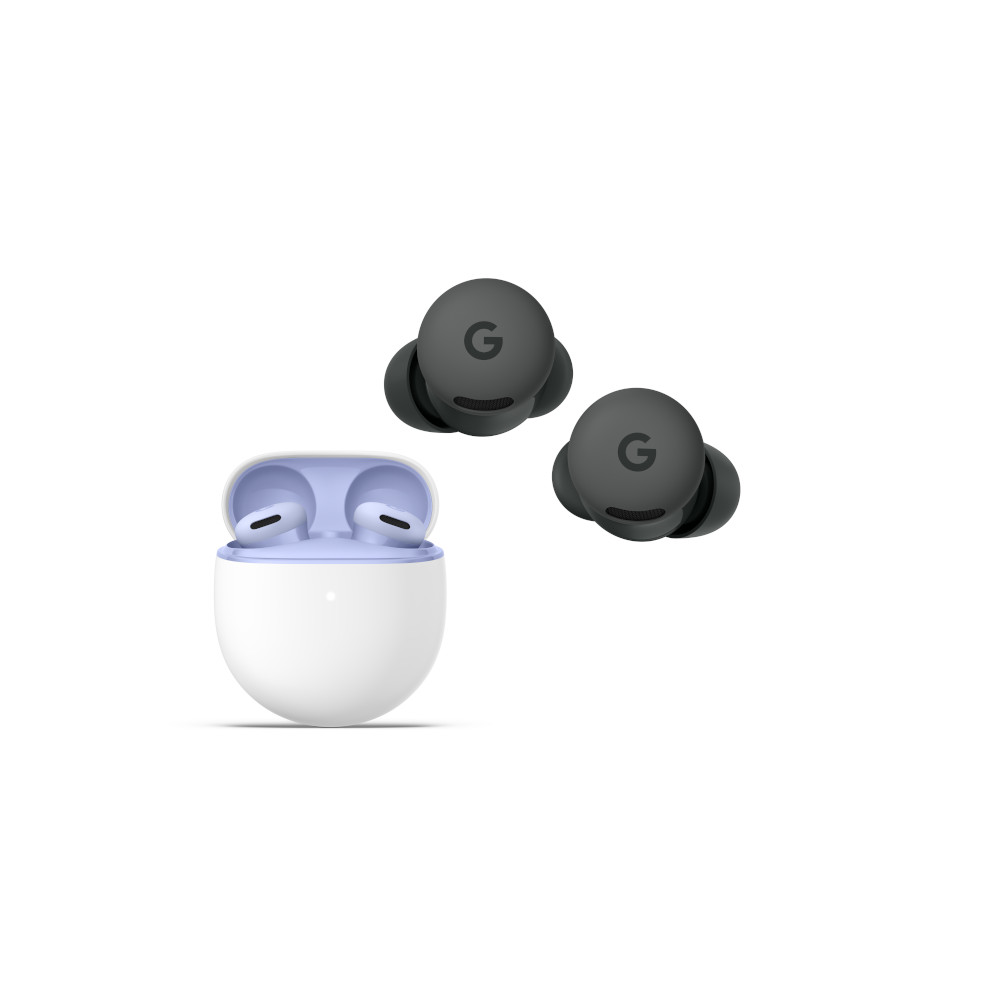
What should you get instead of the Google Pixel Buds 2a?
If you’re looking for alternatives to the Google Pixel Buds 2a, they’re going to be a little different than you might be expecting, simply because these earbuds are a little less expensive than others they compete against. For example, the Google Pixel Buds Pro 2 ($229 at Amazon) offer a clear upgrade, but the jump in cost is significant. You might not care too much for spatial audio or extra features, so something a little less complicated like the OnePlus Buds 4 ($99.99 at Amazon). Of course, if you really want the latest-and-greatest features, you’re going to have to shell out for something like the JBL Live Beam 3 ($199.95 at Amazon).
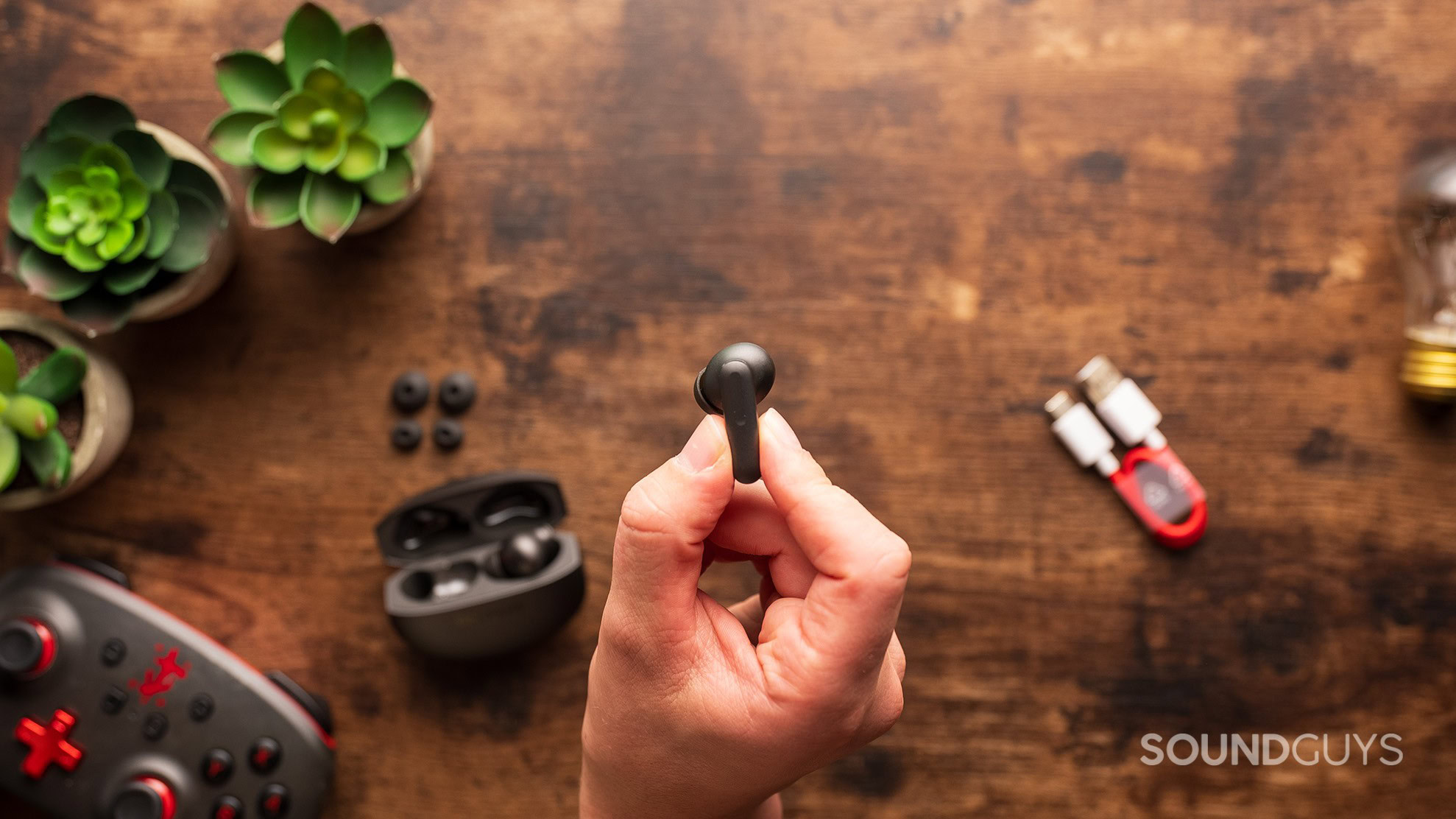
Bass enthusiasts will probably get a little more bang for their buck with the Bose QuietComfort Earbuds ($179 at Amazon). Those looking for better sound quality will likely be satisfied with the Samsung Galaxy Buds 3 FE ($149.99 at Amazon), though that particular model does not offer Multipoint. Should that be a problem, the Nothing Ear (3) ($179 at Amazon) is a passable alternative.
Google Pixel Buds 2a review: FAQs
No. However, the earbuds are water and dust resistant, with an IP54 rating.
Yes. Provided the earbuds fit you well, these are good workout buddies.
Yes. However, many features do not work on iPhones, and some features are locked to only Pixel phones within the Android ecosystem.
Yes.
Yes. The earbuds support Multipoint.
No.
Yes. Within the Pixel Buds app, toggle the appropriate settings to enable single-earbud listening and ANC.
No.
No.
Unclear. Probably not.
Fast charging is not listed, but devices with small batteries do not need it. This is because with modern chargers, it doesn't take long to fill small cells, so it should be difficult to measure a big difference between charging times for true wireless earbuds that support the features, and those that don't.
Thank you for being part of our community. Read our Comment Policy before posting.